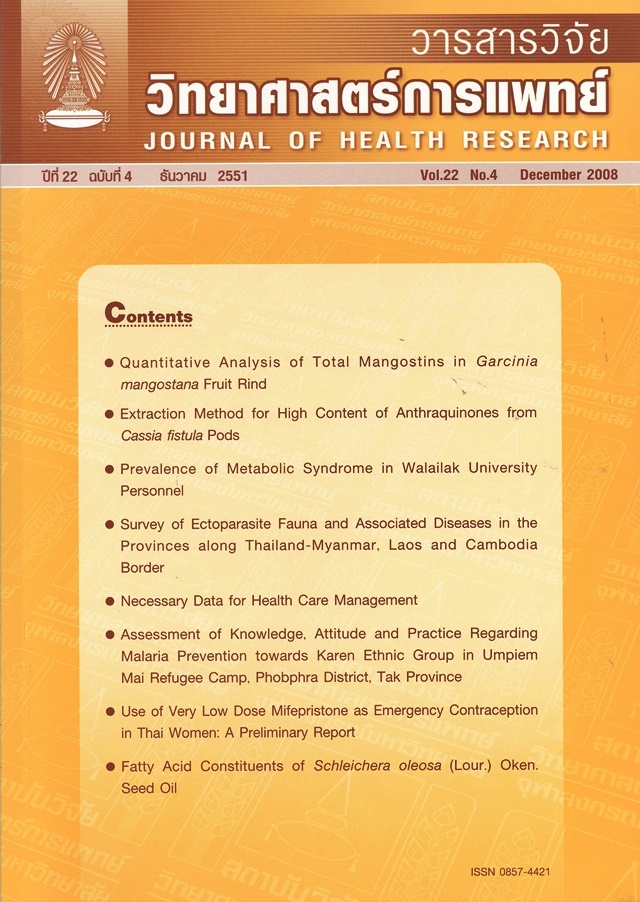Quantitative Analysis of Total Mangostins in Garcinia mangostana Fruit Rind
Keywords:
Garcinia mangostana, mangosteen, α-mangostin, Guttiferae, UV-spectrophotometryAbstract
The fruit of Garcinia mangostana Linn. (mangosteen) is very popular in Thailand. The fruit rind contains mangostins of which a major constituent is α-mangostin. The fruit rind extract and mangostin have been known to possess antibacterial causing acne. In Thailand, the extract is popularly used in herbal cosmetics for anti-acne effect. Thus quality assessment of this plant needs to be controlled for the limit of mangostin content. This study was undertaken to evaluate the content of total mangostins in the dried powder and the ethanolic extract of the fruit rinds of G. mangostana collected from 13 locations from the East and the South of Thailand. The UV-spectrophotometric method was validated for linearity, precision, accuracy, limit of detection (LOD) and limit of quantitation (LOQ). The linearity was found over the range of 2-20 μg/ml with regression coefficient (r2) 0.9999. Intra- and interday precisions showed relative standard deviation (%RSD) less than 2 %. Accuracy of the method was determined by a recovery study conducted at 3 different levels, and the average recovery was found to be 100.68 %. The LOD and LOQ were 0.1622 and 0.4915 μg/ml, respectively. The total mangostin contents in all dried powder samples were in the range of 8.51 ± 0.05 to 11.50 ± 0.02 % w/w while in the crude ethanolic extracts were 30.19 ± 0.16 to 45.61 ± 0.09 % w/w. The average content of total mangostins (10.39 ± 1.04 % of the dried powder) was higher in samples from the South where it rains all year. The averages of total mangostin contents in all dried powder samples and in the ethanolic extracts were found to be 9.94 ± 0.88 and 36.25 ± 4.66 % w/w, respectively. The proposed UV-spectrophotometric method was found to be simple, rapid, and suitable for routine quality control of raw material of G. mangostana fruit rind and its extract. This information will be useful as a guidance for standardization of G. mangostana fruit rind and the extracts, and finding appropriate sources of high total mangostins content for good quality of G. mangostana raw materials in Thailand.







